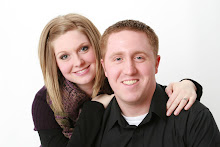THREE SHOT HDR

1. Sewing Machine: May 21st, 2010; 2:15 p.m.; Bannack, MT; Edited in HDR
2. Sewing Machine 1: May 21st, 2010; 2:15 p.m.; Bannack MT; f/3.2; 1/30 sec.;SONY DSC-H50; -1
3. Sewing Machine 2: May 21st, 2010; 2:15 p.m.; Bannack MT; f/ 3.2; 1/30 sec.; SONY DSC-H50; 0
4. ewing Machine 3 May 21st, 2010; 2:15 p.m.; Bannack MT; f/ 3.2; 1/30 sec.; SONY DSC-H50; +1
1. HDR Edited Bannack Salon Chair: May 21st, 2010 4:35 p.m. Bannack, MT
2. Bannack Salon Chair 1; May 21st, 2010; 4:35 p.m.; Bannack MT; f/2.7; 1/13; SONY DSC-H50; -2
3. Bannack Salon Chair 1; May 21st, 2010; 4:35 p.m.; Bannack MT; f/2.7; 1/15; SONY DSC-H50; 0
4. Bannack Salon Chair 1; May 21st, 2010; 4:35 p.m.; Bannack MT; f/2.7; 1/13; SONY DSC-H50; +2
This was harder then I thought it would be. I used a tripod and set my camera to Braketing (for the first one) which was set to take three consecutive shots with different exposures of -1, 0, and +1. Then I imported all three exposures into HDR and let the program do the rest! I was able to help enhance the photo with different settings, making the end result something I like! With the second set of photos I manually changed the exposure compensation useing -2, 0, and +2. This one has way more visible contrast between the three photos taken. I did the same as before and brought all three into HDR, watched the magic work and then used the tonal mapping features to enhance color and lighting.
ONE SHOT HDR
This was harder then I thought it would be. I used a tripod and set my camera to Braketing (for the first one) which was set to take three consecutive shots with different exposures of -1, 0, and +1. Then I imported all three exposures into HDR and let the program do the rest! I was able to help enhance the photo with different settings, making the end result something I like! With the second set of photos I manually changed the exposure compensation useing -2, 0, and +2. This one has way more visible contrast between the three photos taken. I did the same as before and brought all three into HDR, watched the magic work and then used the tonal mapping features to enhance color and lighting.
ONE SHOT HDR
1. HDR Edited Bannack Wall
2.Bannack Wall; May 21st, 2010; 12:48 p.m.; Bannack. MT; f/2.7; 1/10; SONY DSC-H50
3. HDR Edited Old Bottles
4. Old Bottles; May 21st, 2010; 4:41 p.m.; Bannack MT; f/2.7; 1/100; SONY DSC-H50
5. HDR Edited School House Doors
6. School House Doors; May 21st, 2010; 1:02 p.m.; Bannack, MT; f/2.7; 1/125 sec.; SONY DSC-H50
7. Edited HDR Bannack Masonic Temple/ School House
8. Bannack Masonic Temple/School House; May 21st, 2010; 5:19 p.m.; f/2.8; 1/640; SONY DSC-H50
These shots are all one shot HDR photos, which means that there was only one photo taken and then opened them in HDR. I used the same editing techniques with the one photo as I did the three. It was amazing what could be done with only one image instead of three. Below I have added a few more photos that I edited in HDR just to show you what else was done in Bannack!
EXTRAS
1. Door Knob; May 21st, 2010; 2:15 p.m.; Bannack, MT; f/5.6; 1/20 sec.; SONY DSC-H50; HDR Edited
2. Hotel Stairs: May 21st, 2010; 2:18 p.m.; Bannack, MT; f/3.5; 1/30 sec.; SONY DSC-H50; HDR Edited
3. Old Car; May 21st, 2010; 10:09 a.m.; Bannack, MT; f/2.7; 1/1600 sec.; SONY DSC-H50; HDR Edited
4. Tree; May 21st, 2010; 10:04 a.m.; Bannack, MT; f/2.7; 1/1000sec.; SONY DSC-H50; HDR Edited
I really loved using this program and seeing what could be done with colors, lighting, and other enhancements that were features in HDR. I am excited to use it more in the future!



















































